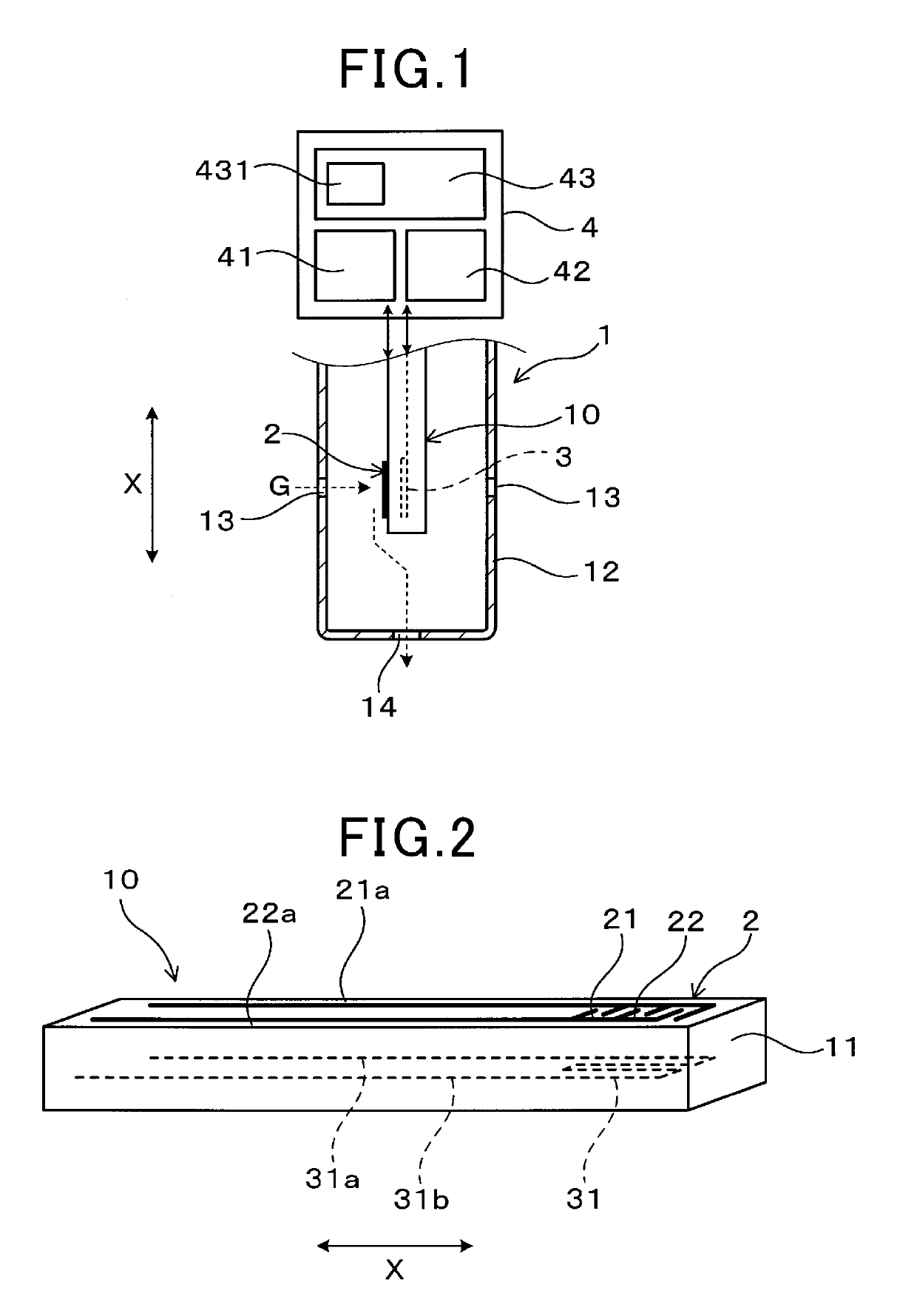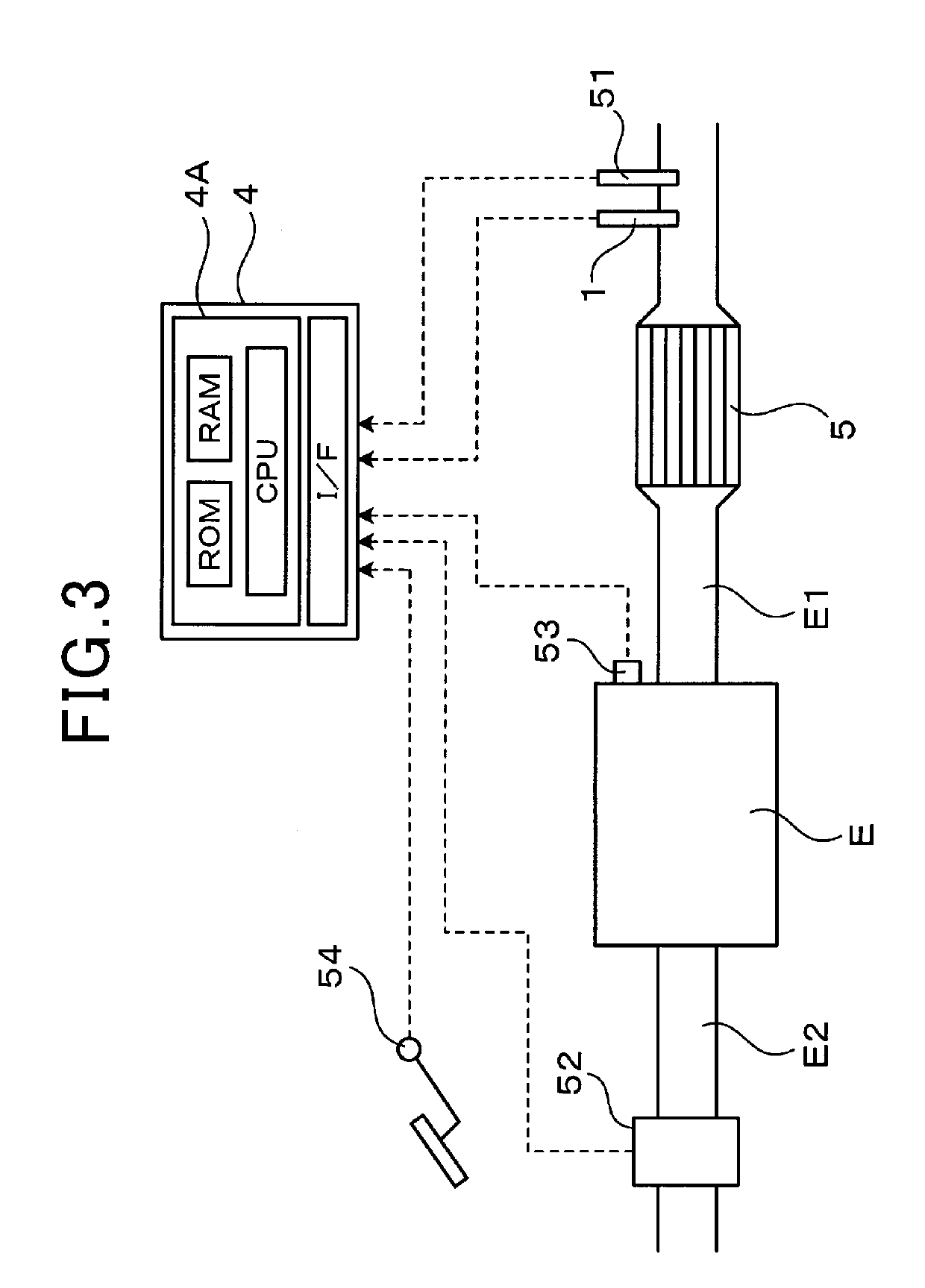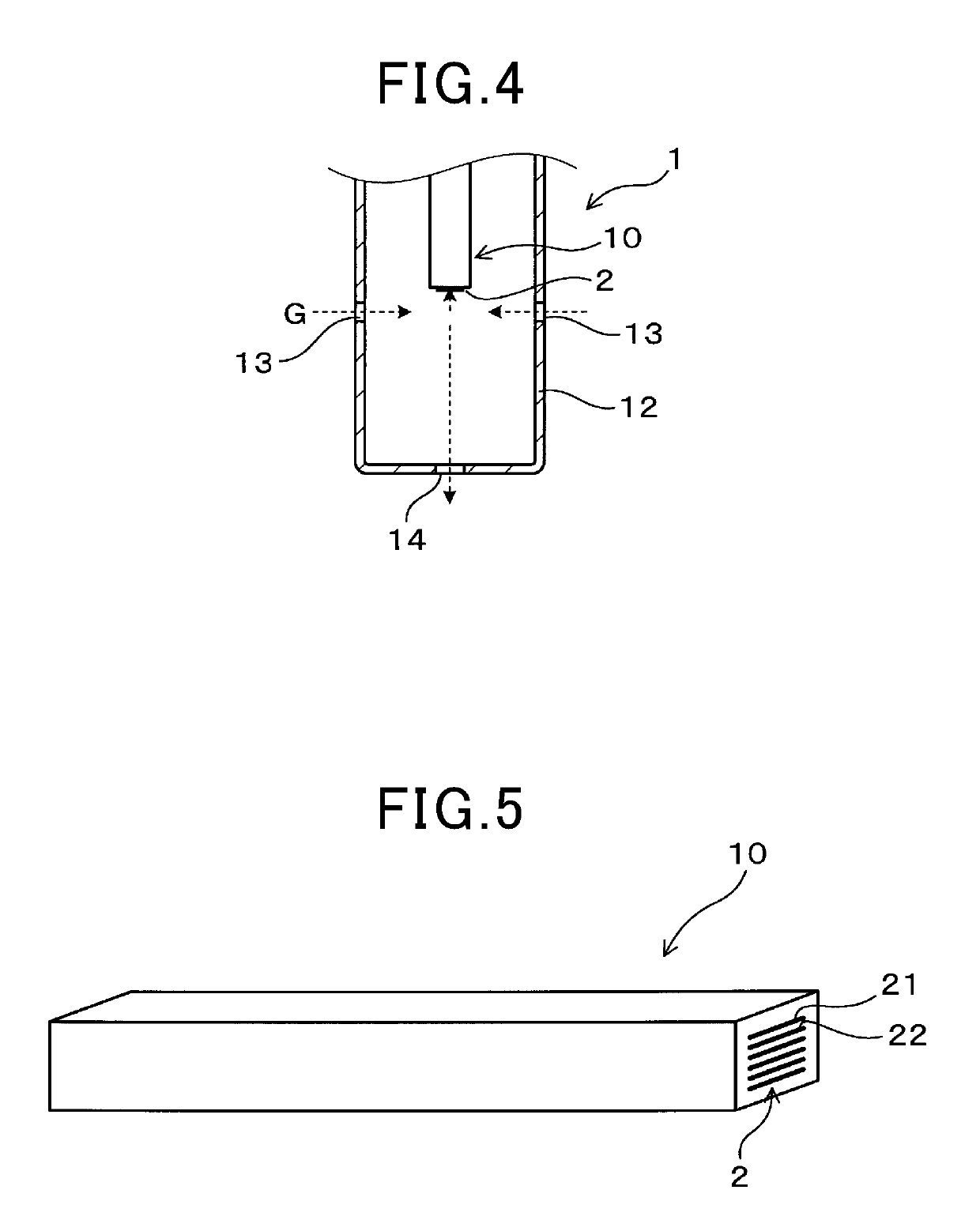Particulate matter detection device
- Summary
- Abstract
- Description
- Claims
- Application Information
AI Technical Summary
Benefits of technology
Problems solved by technology
Method used
Image
Examples
first embodiment
[0034]Next, an embodiment of a particulate matter detection device and a particulate matter detection method will be described with reference to the drawings. As illustrated in FIGS. 1 to 3, the particulate matter detection device includes a particulate matter detection sensor 1 as a sensor unit configured to detect a particulate matter contained in measuring gas G, and an electronic control unit 4 (hereinafter referred to as an “ECU”) as a sensor control unit configured to detect the number of particles of the particulate matter based on a detection signal from the particulate matter detection sensor 1. The ECU 4 outputs a control signal to the particulate matter detection sensor 1, thereby controlling collection and detection of the particulate matter.
[0035]As illustrated in FIG. 1, the particulate matter detection sensor 1 includes an electrical resistance sensor element 10 and a protection cover 12 configured to cover the outer periphery of the sensor element 10. When an axial d...
second embodiment
[0069]In the first embodiment, the case where the mass M of the particulate matter is estimated based on the first output value V1 has been described, but other values than the first output value V1 can be used.
[0070]As illustrated in FIG. 12, in the present embodiment, particulate matter detection process executed by an ECU 4 as a sensor control unit is configured such that part of the procedure of the first embodiment illustrated in FIG. 6 is changed. Specifically, this process is different in that a step S111 is provided instead of step S11 of FIG. 6. Steps S1 to S10 are the same process as that of FIG. 6, and therefore, description thereof will be omitted. At step S111 of FIG. 12, the mass M of a particulate matter is estimated using a sensor output V at the time of positive determination at step S2 instead of a first output value V1 at a first temperature T1.
[0071]At step S2 of FIG. 12, it is determined whether or not the sensor output V reaches a predetermined output V0 set in...
third embodiment
[0074]In the first and second embodiments, the case where temperature correction is performed after calculation of the output changing ratio V2 / V1 has been described, but the necessity of temperature correction can be eliminated by temperature increase control. That is, in the present embodiment, a heating control unit 42 has a temperature increase control section configured to control the rate of temperature increase upon heating from a first temperature T1 to a second temperature T2. The heating control unit 42 constantly controls the rate of temperature increase until the temperature T of a sensor element 10 at least exceeds a temperature corresponding to a second output value V2. By the temperature increase control section, the temperature T of the sensor element 10 at which burning of soot begins can be stabilized, and variation in an output changing ratio V2 / V1 can be reduced.
[0075]As illustrated in FIG. 13, in the present embodiment, particulate matter detection process execu...
PUM
 Login to View More
Login to View More Abstract
Description
Claims
Application Information
 Login to View More
Login to View More - R&D
- Intellectual Property
- Life Sciences
- Materials
- Tech Scout
- Unparalleled Data Quality
- Higher Quality Content
- 60% Fewer Hallucinations
Browse by: Latest US Patents, China's latest patents, Technical Efficacy Thesaurus, Application Domain, Technology Topic, Popular Technical Reports.
© 2025 PatSnap. All rights reserved.Legal|Privacy policy|Modern Slavery Act Transparency Statement|Sitemap|About US| Contact US: help@patsnap.com



